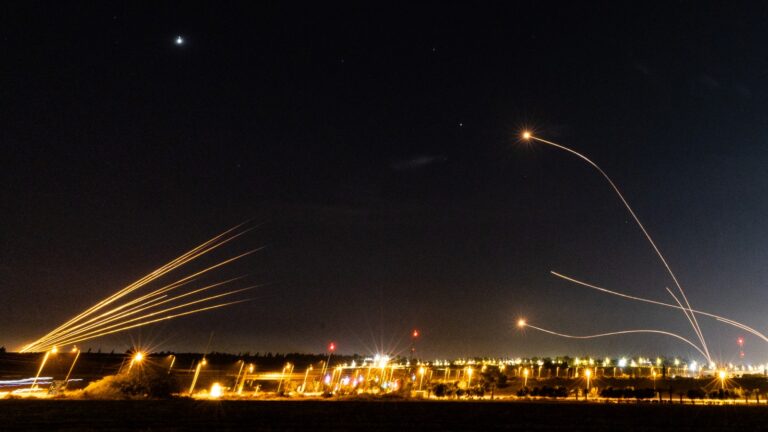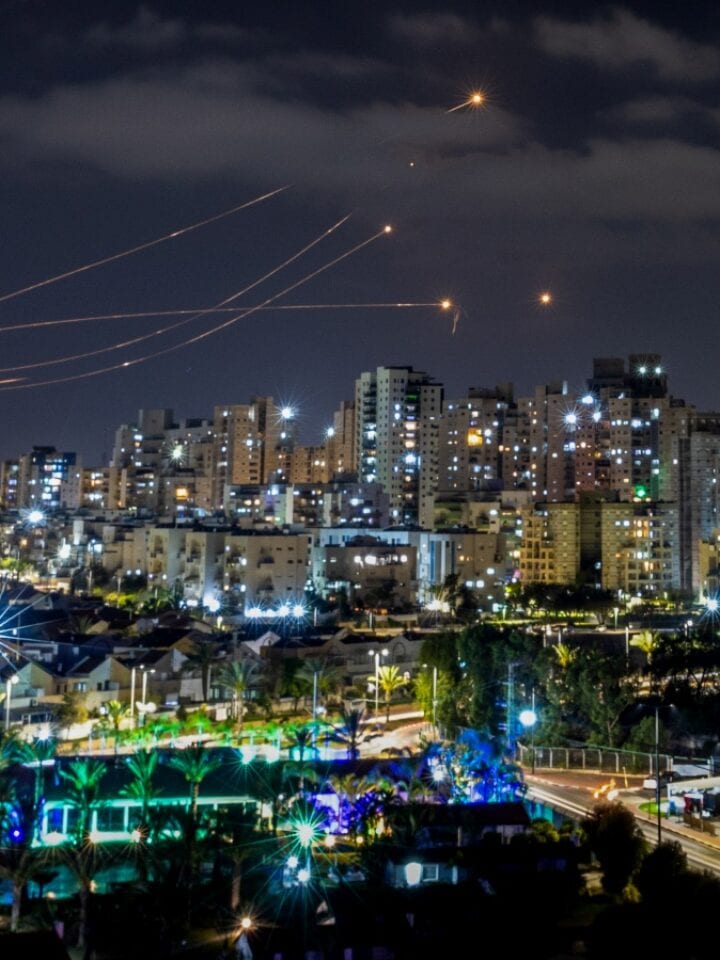Israel’s Iron Dome missile defense system has been a gamechanger since its introduction in 2011 following a famously daring and fast development process.
Designed to detect, identify, track and shoot down short-range ballistic rockets, Iron Dome was expected to achieve an 85 percent success rate. Instead, statistically it’s more than 95% successful.
“That’s an extreme technology achievement that nobody expected,” says Navy Commander (ret.) Eyal Pinko, a senior research fellow at the Begin-Sadat Center for Strategic Studies at Bar-Ilan University and a lecturer on intelligence, hybrid warfare, defense, cybersecurity and maritime strategy.

Portable Iron Dome batteries deployed throughout the country make Israelis feel protected from projectiles, which can be launched at any time by enemy states or terror organizations seeking to harm civilians and deter Israel’s military response, says Pinko.
“When you have a long-term threat like that, Iron Dome gives people protection and the ability to breathe and live a relatively normal life,” says Pinko.
“And when people on the home front feel safer, the government and military can do their job better.”
Development began in 2003
The development of the system started in 2003, after Hamas launched a huge attack of Kassam rockets on Israel, Pinko explains.
“Israel understood that rockets launched from the Gaza Strip toward Israeli cities and villages in the south would be a strategic issue. There was a huge debate in the defense community about the best solution for protection.”
After many discussions, tests and proofs of concept, a Directorate of Defense Research and Development committee headed by navy commander Michael Peled decided to recommend developing what would become Iron Dome (Kippat Barzel in Hebrew).
The committee presented the idea to Brig. Gen. Daniel Gold, head of R&D at the Defense Ministry. With typical Israeli chutzpah, Gold gave the go-ahead to the project before he had permission from his skeptical superiors.
“It was developed in only four or five years, whereas missile systems usually take eight to 10 years to develop,” says Pinko.
That’s partly due to US funding, which in turn gives the United States the right to use Iron Dome and even sell it with mutual approval.
Detect, command, intercept
Iron Dome has three components, each developed by a different Israeli defense contractor.
A unique radar system detects, identifies and tracks rockets in the sky.
A command-and-control system uses the radar data to determine whether and where the projectile should be intercepted. If it’s going to land in an open area or in the sea, Iron Dome operators will not waste costly ammunition to block it.
The third component is Tamir interceptor missiles that can be launched against the incoming rocket at an exact future engagement point calculated by the system. Each Iron Dome holds 20 Tamirs, each weighing 200 pounds and measuring 10 feet long.
“The system can be deployed very fast,” says Pinko.
When IDF intelligence alerts the air force of a threat, Iron Dome batteries are moved into place quickly along with a small base housing the operating squad.
4 layers of defense
Iron Dome is just one layer in Israel’s four-layer arsenal to intercept different types of threats.
“Iron Dome deals with ballistic rockets launched from a certain distance. David’s Sling protects against more sophisticated and longer-range ballistic missiles and cruise missiles,” Pinko explains.

The Arrow 2 and Arrow 3 interceptors form the longest-range layer of defense, ready to act against ballistic missiles fired from countries such as Iran, Iraq or Yemen.
“Rockets and missiles are the main strategic weapons of many countries because they don’t want face-to-face warfare,” says Pinko.
“Now and in the future, rockets and missiles will have a large impact on warfare, so our missile-defense systems are critical.”
Hezbollah alone has more than 150,000 rockets and missiles stockpiled in Lebanon, he adds.
“In our environment, the Iron Dome is a must. People from abroad are always amazed at how life goes on in Israel more or less normally because of this umbrella that we have,” Pinko says.
Strategic error?
While nobody doubts the tactical success of Iron Dome, some thought leaders see it as a strategic policy mistake.
They argue that Iron Dome is a key factor in Israel’s failure to deal decisively with the Hamas terrorist state building up on its border over the past decade — and ultimately its failure to prevent the October 7 massacres.

“We can look at it as part of this ‘status quo strategy’ of Israel, part of [Prime Minister] Netanyahu’s strategy to deter massive attacks against Israel,” says Chen Kertcher, a lecturer in the department of Middle Eastern studies at Ariel University and a researcher and author specializing in international politics and security, conflict resolution and international interventions.
Because Iron Dome works so effectively against short-range missiles, the government was able to keep its response to Hamas provocations limited to “small antiterror campaigns with minimal casualties,” says Kertcher.
This strategy gave Hamas the opportunity to increase its power and subjected dozens of southern communities to a persistent “drizzle” of rocket fire, he asserts.
“For these families, it was a reality of having 15 seconds to get to safety and knowing the army would not retaliate, would not enter Gaza. And the rest of the people don’t care because they have the Iron Dome. We sacrificed people in the south so others could live and feel protected.”
Kertcher believes that when the strategic failures leading to the current war are investigated, one question that must be asked is whether Iron Dome has, ironically, harmed our national resilience.
“Even now, in the majority of Israel, millions of people live regular lives. The worst that can happen is you hear a siren and you go to the mamad [safe room] and that’s it, Iron Dome will take care of it,” he tells ISRAEL21c.
“It’s a brilliant, very efficient and successful antimissile weapon. But if we didn’t have it, the Israeli government would have been forced to attack Hamas years ago, when it was not as strong as it is now.”
Read more facts about the Iron Dome system here.
















